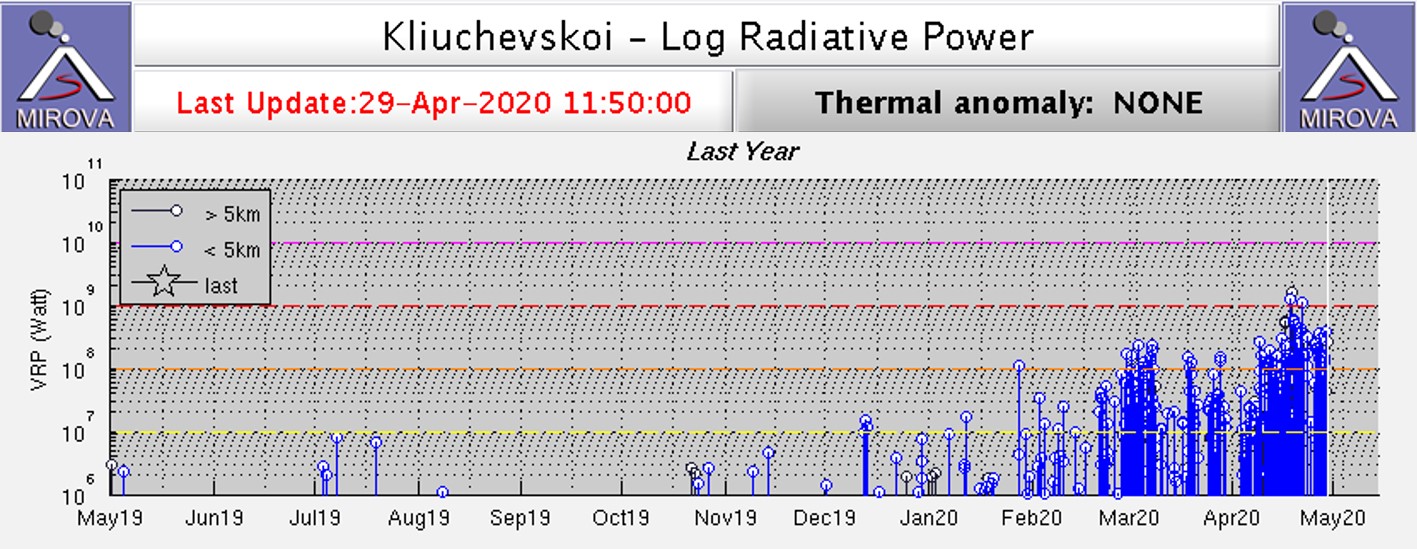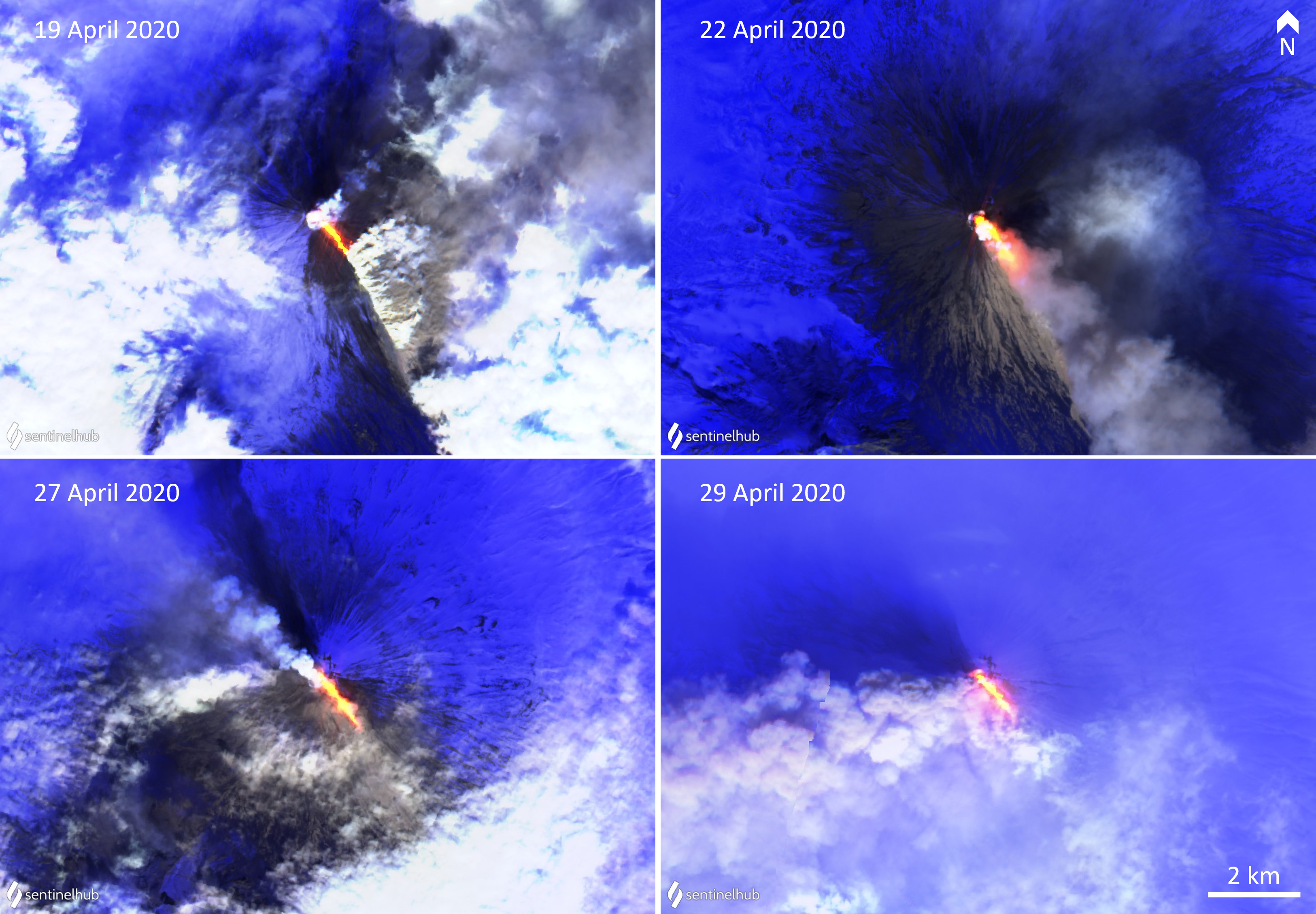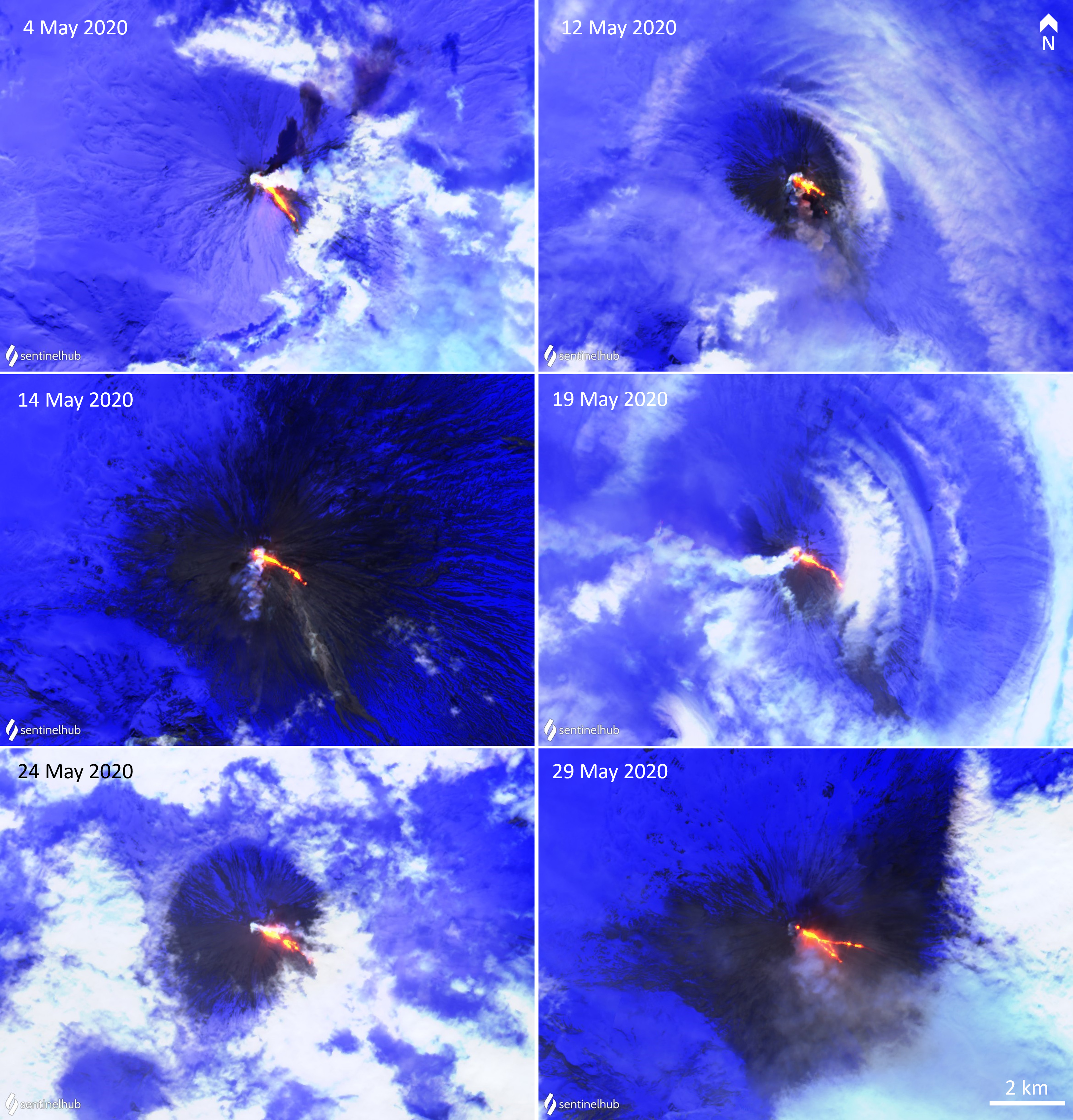Report on Klyuchevskoy (Russia) — June 2020
Bulletin of the Global Volcanism Network, vol. 45, no. 6 (June 2020)
Managing Editor: Edward Venzke.
Edited by Janine B. Krippner.
Klyuchevskoy (Russia) Strombolian activity November 2019 through May 2020; lava flow down the SE flank in April
Please cite this report as:
Global Volcanism Program, 2020. Report on Klyuchevskoy (Russia) (Krippner, J.B., and Venzke, E., eds.). Bulletin of the Global Volcanism Network, 45:6. Smithsonian Institution. https://doi.org/10.5479/si.GVP.BGVN202006-300260
Klyuchevskoy
Russia
56.056°N, 160.642°E; summit elev. 4754 m
All times are local (unless otherwise noted)
Klyuchevskoy is part of the Klyuchevskaya volcanic group in northern Kamchatka and is one of the most frequently active volcanoes of the region. Eruptions produce lava flows, ashfall, and lahars originating from summit and flank activity. This report summarizes activity during October 2019 through May 2020, and is based on reports by the Kamchatkan Volcanic Eruption Response Team (KVERT) and satellite data.
There were no activity reports from 1 to 22 October, but gas emissions were visible in satellite images. At 1020 on 24 October (2220 on 23 October UTC) KVERT noted that there was a small ash component in the ash plume from erosion of the conduit, with the plume reaching 130 km ENE. The Aviation Colour Code was raised from Green to Yellow, then to Orange the following day. An ash plume continued on the 25th to 5-7 km altitude and extending 15 km SE and 70 km SW and reached 30 km ESE on the 26th. Similar activity continued through to the end of the month.
Moderate gas emissions continued during 1-19 November, but the summit was obscured by clouds. Strong nighttime incandescence was visible at the crater during the 10-11 November and thermal anomalies were detected on 8 and 10-13 November. Explosions produced ash plumes up to 6 km altitude on the 20-21st and Strombolian activity was reported during 20-22 November. Degassing continued from 23 November through 12 December, and a thermal anomaly was visible on the days when the summit was not covered by clouds. An ash plume was reported moving to the NW on the 13th, and degassing with a thermal anomaly and intermittent Strombolian activity then resumed, continuing through to the end of December with an ash plume reported on the 30th.
Gas-and-steam plumes continued into January 2020 with incandescence noted when the summit was clear (figure 33). Strombolian activity was reported again starting on the 3rd. A weak ash plume produced on the 6th extended 55 km E, and on the 21st an ash plume reached 5-5.5 km altitude and extended 190 km NE (figure 34). Another ash plume the next day rose to the same altitude and extended 388 km NE. During 23-29 Strombolian activity continued, and Vulcanian activity produced ash plumes up to 5.5 altitude, extending to 282 km E on the 30th, and 145 km E on the 31st.
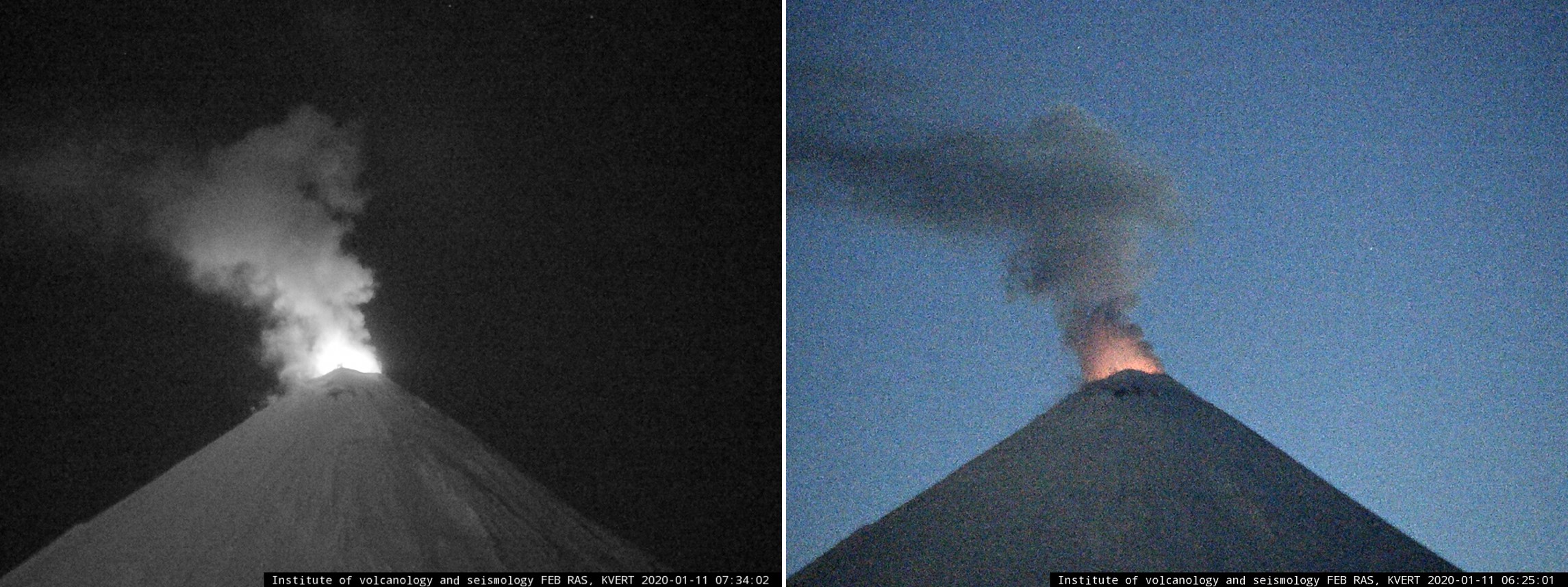 |
Figure 33. Incandescence and degassing were visible at Klyuchevskoy through January 2020, seen here on the 11th. Courtesy of KVERT. |
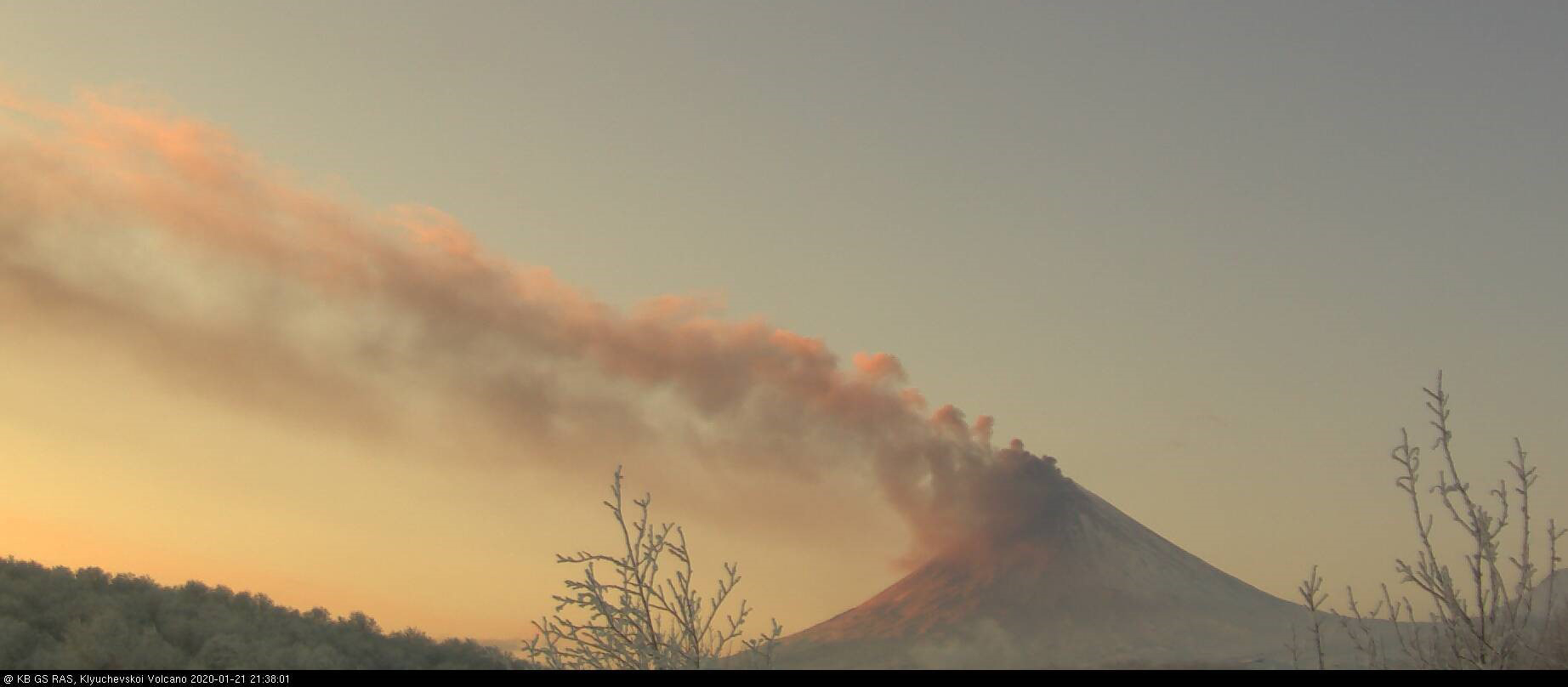 |
Figure 34. A low ash plume at Klyuchevskoy on 21 January 2020 extended 190 km NE. Courtesy of KVERT. |
Strombolian activity continued throughout February with occasional explosions producing ash plumes up to 5.5 km altitude, as well as gas-and-steam plumes and a persistent thermal anomaly with incandescence visible at night. Starting in late February thermal anomalies were detected much more frequently, and with higher energy output compared to the previous year (figure 35). A lava fountain was reported on 1 March with the material falling back into the summit crater. Strombolian activity continued through early March. Lava fountaining was reported again on the 8th with ejecta landing in the crater and down the flanks (figure 36). A strong persistent gas-and-steam plume containing some ash continued along with Strombolian activity through 25 March (figure 37), with Vulcanian activity noted on the 20th and 25th. Strombolian and Vulcanian activity was reported through the end of March.
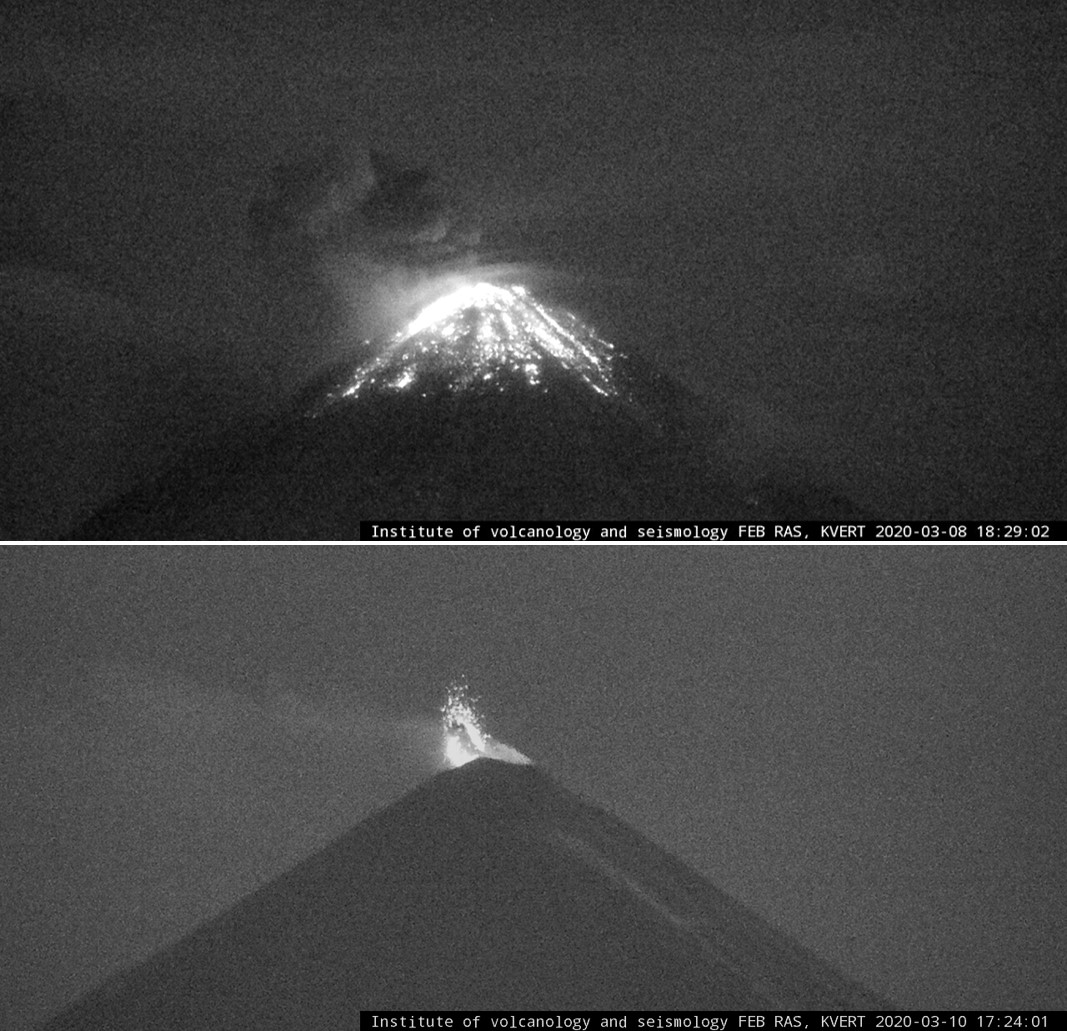 |
Figure 36. Strombolian explosions at Klyuchevskoy eject incandescent ash and gas, and blocks and bombs onto the upper flanks on 8 and 10 March 2020. Courtesy of IVS FEB RAS, KVERT. |
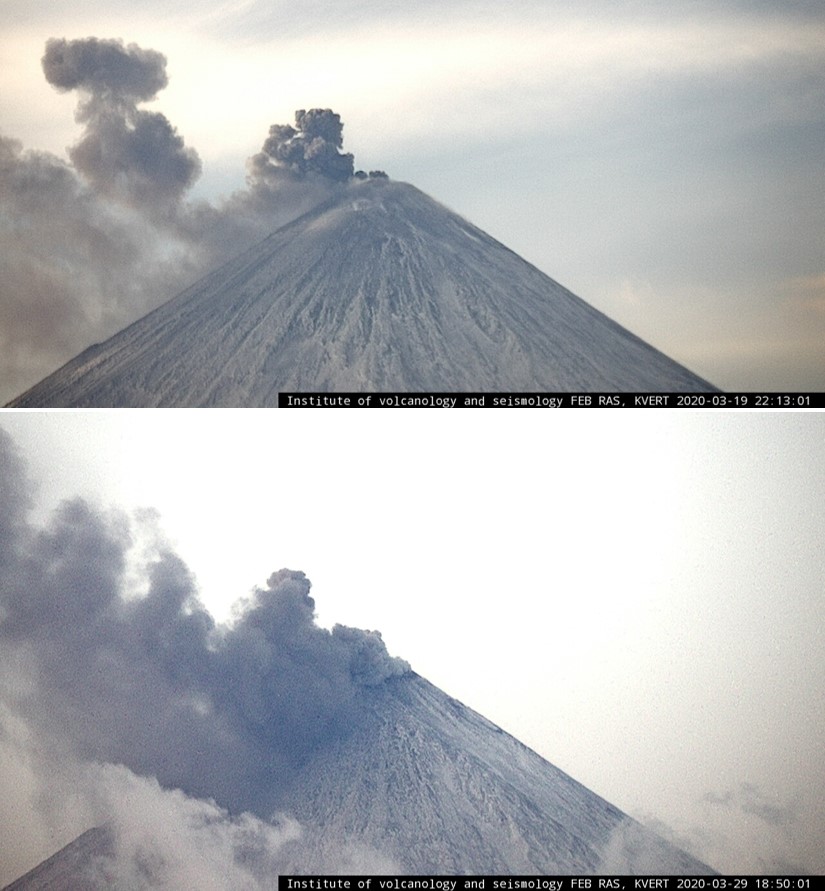 |
Figure 37. Weak ash emission from the Klyuchevskoy summit crater are dispersed by wind on 19 and 29 March 2020, with ash depositing on the flanks. Courtesy of IVS FEB RAS, KVERT. |
Activity was dominantly Strombolian during 1-5 April and included intermittent Vulcanian explosions from the 6th onwards, with ash plumes reaching 6 km altitude. On 18 April a lava flow began moving down the SE flank (figures 38). A report on the 26th reported explosions from lava-water interactions with avalanches from the active lava flow, which continued to move down the SE flank and into the Apakhonchich chute (figures 39 and 40). This continued throughout April and May with sustained Strombolian and intermittent Vulcanian activity at the summit (figures 41 and 42).
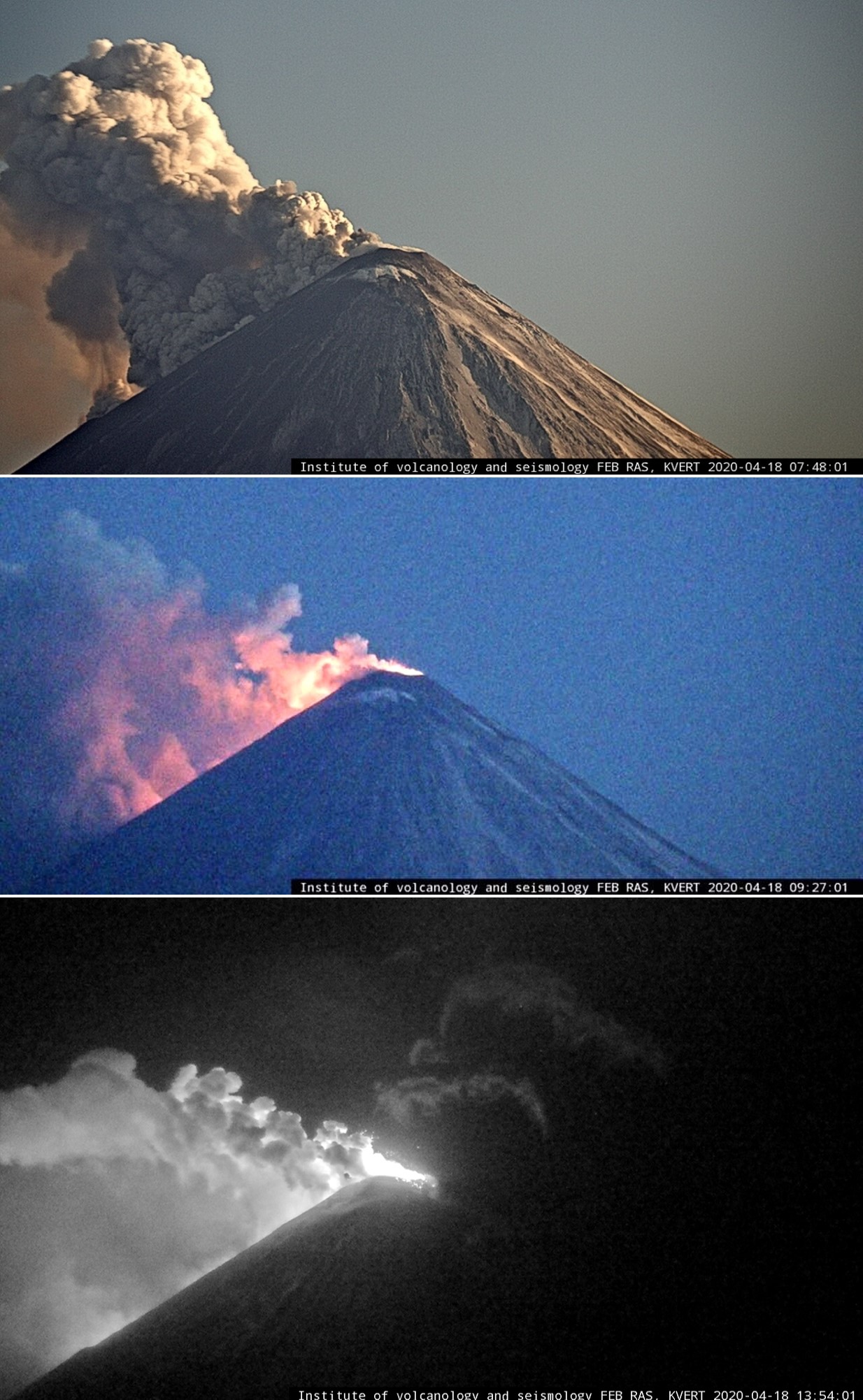 |
Figure 38. Strombolian activity produced ash plumes and a lava flow down the SE flank of Klyuchevskoy on 18 April 2020. Courtesy of IVS FEB RAS, KVERT. |
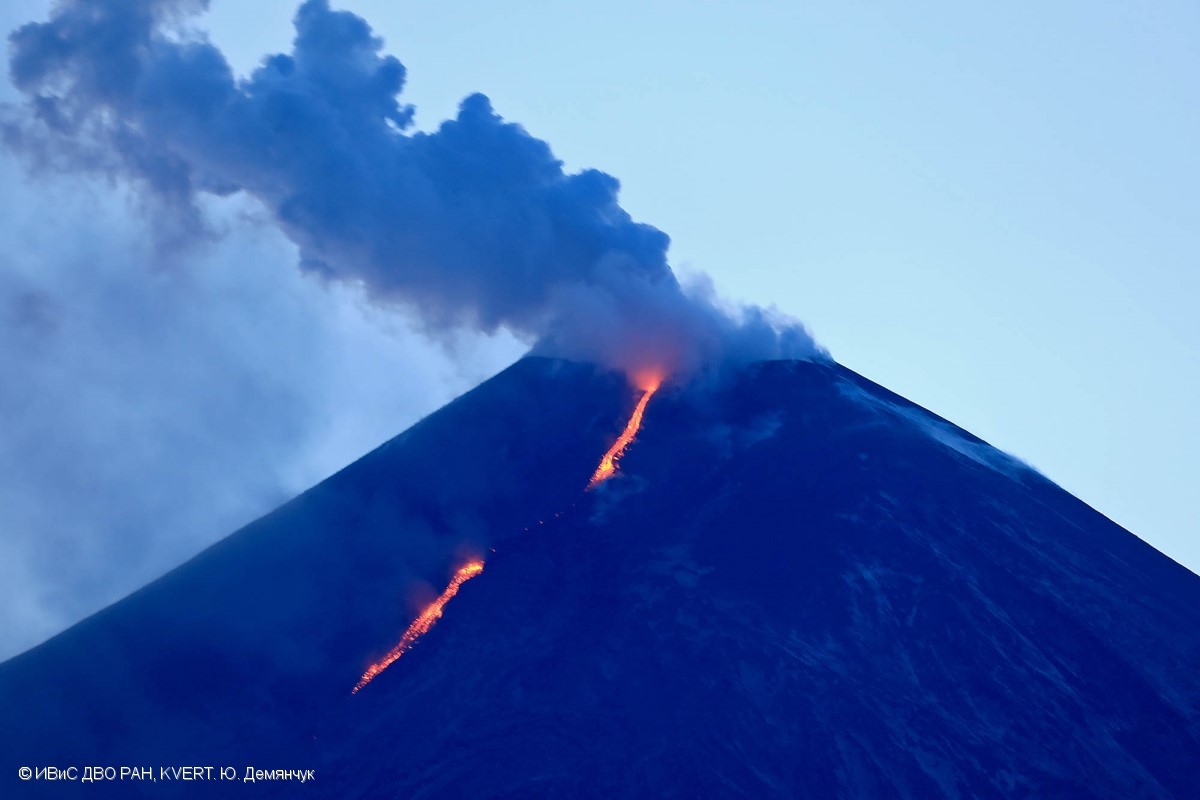 |
Figure 39. A lava flow descends the SW flank of Klyuchevskoy and a gas plume is dispersed by winds on 21 April 2020. Courtesy of Yu. Demyanchuk, IVS FEB RAS, KVERT. |
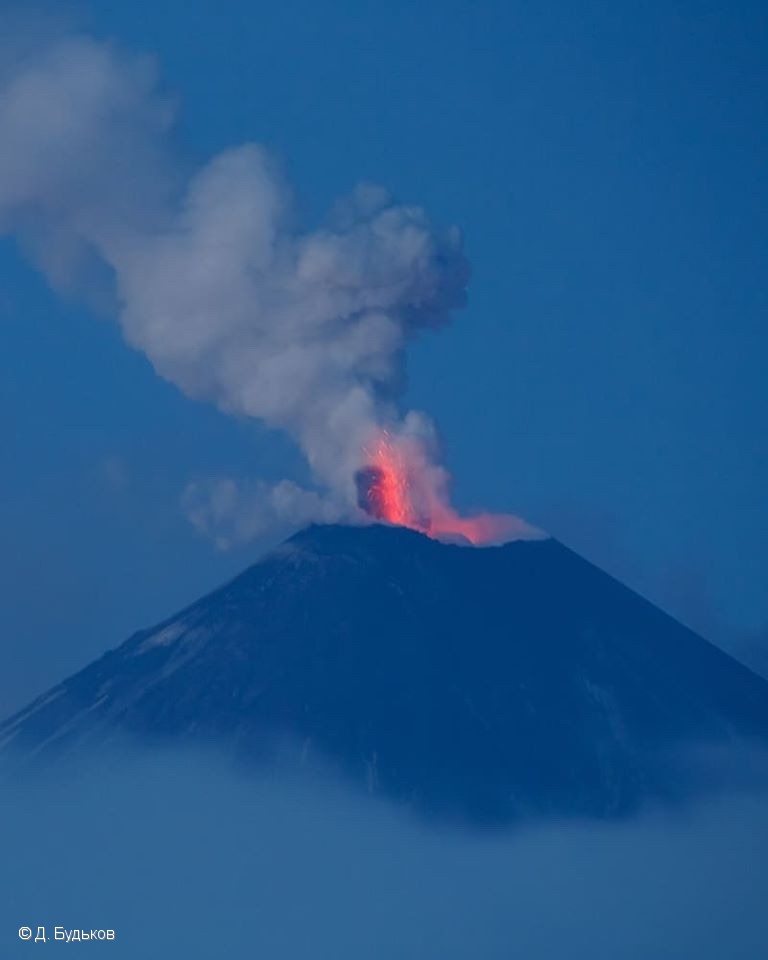 |
Figure 41. Strombolian activity at Klyuchevskoy ejects incandescent ejecta, gas, and ash above the summit on 27 April 2020. Courtesy of D. Bud'kov, IVS FEB RAS, KVERT. |
Geological Summary. Klyuchevskoy is the highest and most active volcano on the Kamchatka Peninsula. Since its origin about 6,000 years ago, this symmetrical, basaltic stratovolcano has produced frequent moderate-volume explosive and effusive eruptions without major periods of inactivity. It rises above a saddle NE of Kamen volcano and lies SE of the broad Ushkovsky massif. More than 100 flank eruptions have occurred during approximately the past 3,000 years, with most lateral craters and cones occurring along radial fissures between the unconfined NE-to-SE flanks of the conical volcano between 500 and 3,600 m elevation. Eruptions recorded since the late 17th century have resulted in frequent changes to the morphology of the 700-m-wide summit crater. These eruptions over the past 400 years have originated primarily from the summit crater, but have also included numerous major explosive and effusive eruptions from flank craters.
Information Contacts: Kamchatka Volcanic Eruptions Response Team (KVERT), Far Eastern Branch, Russian Academy of Sciences, 9 Piip Blvd., Petropavlovsk-Kamchatsky, 683006, Russia (URL: http://www.kscnet.ru/ivs/kvert/); MIROVA (Middle InfraRed Observation of Volcanic Activity), a collaborative project between the Universities of Turin and Florence (Italy) supported by the Centre for Volcanic Risk of the Italian Civil Protection Department (URL: http://www.mirovaweb.it/); Sentinel Hub Playground (URL: https://www.sentinel-hub.com/explore/sentinel-playground).


